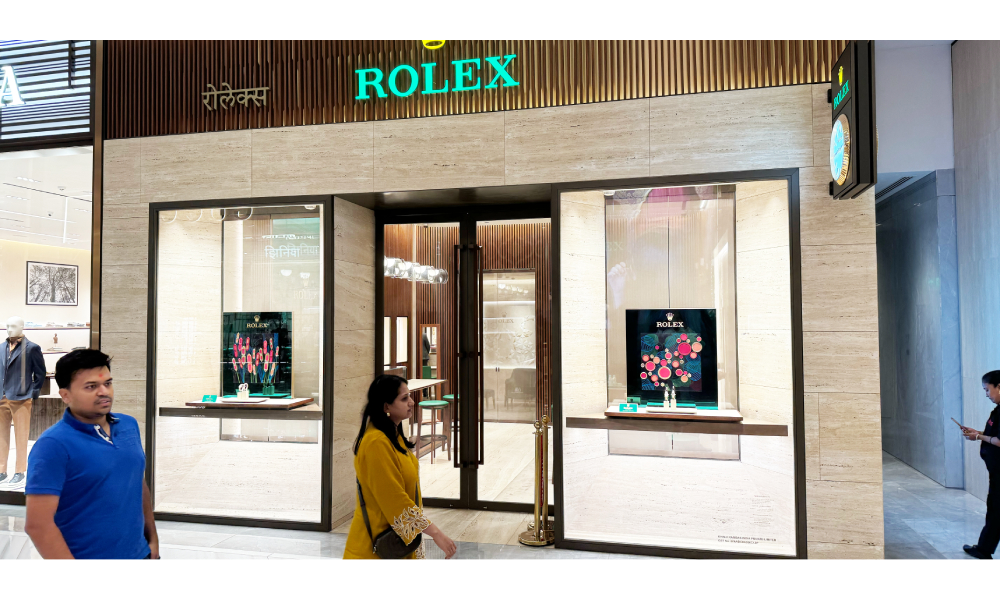The global luxury market, including diamonds, appears to be facing cyclical, rather than permanent, headwinds. Diamond analyst Paul Zimnisky explores why these shifts suggest a temporary downturn, echoing trends in other luxury sectors.
Those in the diamond industry have recently been inundated with media attention and discussion around how weak the market has been. At the forefront of conversation is the competition that lab-grown diamonds have inflicted on natural diamonds – which some see as the primary factor driving natural diamond prices down some 30% from the high reached in early-2022.
However, when it comes to a major globally distributed product like diamonds, the market is complex and drivers behind market behaviour are usually multivariate. This is likely the case in the current downturn.
For instance, the diamond industry is hungover. Record demand for diamonds in 2021 and 2022 was subsequently met by a reversal of the same catalysts that drove the buying frenzy.
For example, record government economic stimulus deployed during the midst of the pandemic had run thin by early-2023. And, lockdowns, which kept consumer spending options restricted for almost three years – to the benefit of hard luxury like diamonds – were for the most part liberated around the same time.
This created an adverse effect in diamond supply/demand dynamics which was compounded by the fact that many people had already bought their full share of diamonds in the boom years – by 2023 most consumers were simply ready to spend their money elsewhere.
Further, in 2023 China (the diamond industry’s second largest consumer market) effectively ground to halt and has yet to recover. According to anecdotes from supply chain participants, diamond demand in China is down in excess of 50% over the last two of years – and most of this can be attributed to large, macroeconomic variables.
Other luxury products have shown similar demand volatility in recent years which could be indicative that the diamond industry is facing more cyclical headwinds rather than a cataclysmic secular downfall.
According to luxury watch website Subdial, a second-hand Rolex price index is down almost 20% over the last 24 months – even higher-end Patek Philippe is down closer to 30%.

On Bloomberg TV, the CEO of fine watchmaker Breitling recently cautioned that “many brands are (too) dependent on the Chinese market,” metaphorically adding “you need to have a plane with four, five engines, (so) if one engine doesn’t work, the others are working.”
In September the Wall Street Journal reported that the fine art market is “tanking” due in part to “higher interest rates and inflation” as well as buyer “sticker shock after years of ever-higher prices.” The report further cited that “newly wealthy” art buyers in Asia have been relied upon to “mop up” pieces at “the highest levels,” however now with China slowing, that support is not there.
Looking ahead, in September Bloomberg reported that Richemont’s Johann Rupert “applauded” luxury watch companies for showing supply “restraint” amidst softer demand conditions over the last year – a move familiar to those in the diamond trade. Rupert noted that the high-end watch industry is “acting very responsibly by constraining production.” Richemont is the world’s second largest luxury conglomerate and owns watch brands Piaget, IWC and Vacheron Constantin, as well as, high jewellers Cartier and Van Cleef & Arpels.
In the Bloomberg interview, Breitling’s Kern said that he is “quite confident” that the luxury industry has “hit bottom,” notably acknowledging India as a bright spot: “the market is there, the wealth is there.” Kern finished by implying that Breitling has plans to open more stores in India in the near future.
Paul Zimnisky, CFA is an independent diamond industry analyst and consultant based in the New York metro area. For regular in-depth analysis and forecasts of the diamond industry please consider subscribing to his State of the Diamond Market, a leading monthly industry report; an index of previous editions can be found here. Also, listen to the Paul Zimnisky Diamond Analytics Podcast on Spotify or Apple Podcasts for exclusive full-length conversations with special guests from the gem and jewelry industry. Paul is a graduate of the University of Maryland’s Robert H. Smith School of Business with a B.S. in finance and he is a CFA charterholder. He can be followed on X @paulzimnisky and on YouTube @paulzimnisky.
Paul will be speaking at the Angola International Diamond Conference on 23 October in Saurimo and at European jewellery show INHORGENTA on 22 February, 2025 in Munich. He will also be in Milan and Rome in February 2025 and can be contacted at paul@paulzimnisky.com to arrange a meeting.
Disclosure: At the time of writing Paul Zimnisky held a long equity position in Brilliant Earth Group and Newmont Corp. Paul is an independent board member of Lipari Diamond Mines, a privately-held Canadian company with an active mine in Brazil and a development-stage asset in Angola. Please read full disclosure at www.paulzimnisky.com.

